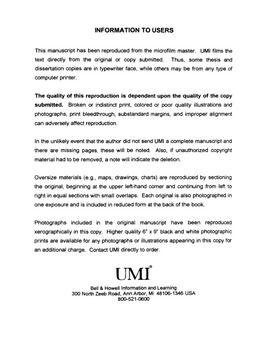| dc.contributor.advisor | Canter, Larry W., | en_US |
| dc.contributor.author | Edwards, Alicia Jeanette. | en_US |
| dc.date.accessioned | 2013-08-16T12:30:43Z | |
| dc.date.available | 2013-08-16T12:30:43Z | |
| dc.date.issued | 1999 | en_US |
| dc.identifier.uri | https://hdl.handle.net/11244/5861 | |
| dc.description.abstract | Effluent trading programs (ETPs) have been proposed as cost-effective alternatives to command-and-control regulations for surface water quality management. In addition to reducing environmental compliance costs, ETPs may encourage pollution prevention, promote the development and installation of more efficient abatement technologies, and reduce pollutant loadings from previously unregulated sources. However, despite these theoretical advantages, relatively few extant ETPs have been identified, and trading activity to date has been minimal. Therefore, the major focus of this research was to develop a qualitative model for designing and implementing successful ETPs. The model, which was based on minimizing or eliminating the negative effects of technical, economic, institutional, and administrative factors that may influence trading programs, contains the following ten components: (1) watershed suitability; (2) pollutant type; (3) trading market size and characteristics; (4) legal authority; (5) administrative acceptability and capability; (6) specific policies, procedures, and trading rules; (7) pre- and post-trade monitoring; (8) effective enforcement; (9) program evaluation; and (10) public involvement. This model is applicable to point-point, point-nonpoint, and/or nonpoint-nonpoint source ETPs and can be used to evaluate existing ETPs, to identify the feasibility of effluent trading in a given watershed, and/or to develop a detailed plan for ETP design, implementation, and evaluation. | en_US |
| dc.description.abstract | Additional emphases of this research included developing derived models specific to intraplant and pretreatment ETPs and identifying methods that can be used to mitigate or overcome various barriers to trading programs. Recommendations for future research or other actions include: (1) refining the qualitative and derived models through additional evaluations of existing ETPs and feasibility studies; (2) aggregating information regarding marginal abatement costs for point and nonpoint sources, nonpoint source pollutant loadings, and the effectiveness of best management practices in different environmental settings; (3) designing water quality monitoring networks and developing modeling techniques to assess the environmental effects of trades; (4) amending federal, state, and local laws and regulations to explicitly authorize effluent trading as an acceptable compliance alternative; and (5) developing strategies and methods to integrate ETPs into existing watershed planning and management activities. | en_US |
| dc.format.extent | 2 v. (xxxi, 622 leaves) : | en_US |
| dc.subject | Water quality management. | en_US |
| dc.subject | Environmental Sciences. | en_US |
| dc.subject | Effluent quality. | en_US |
| dc.subject | Political Science, Public Administration. | en_US |
| dc.title | A qualitative model for designing and implementing effluent trading programs. | en_US |
| dc.type | Thesis | en_US |
| dc.thesis.degree | Ph.D. | en_US |
| dc.thesis.degreeDiscipline | School of Civil Engineering and Environmental Science | en_US |
| dc.note | Source: Dissertation Abstracts International, Volume: 60-08, Section: B, page: 3824. | en_US |
| dc.note | Chair: Larry W. Canter. | en_US |
| ou.identifier | (UMI)AAI9941852 | en_US |
| ou.group | College of Engineering::School of Civil Engineering and Environmental Science | |
